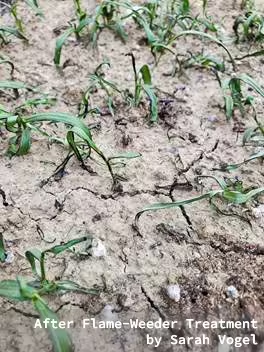Judging by the weed pressure in my garden, the growing season is in full force! Staying vigilant about weed control in the garden is necessary as weeds will compete with desirable species for moisture and nutrients. There are several ways to approach weed management, and an integrated approach is one that uses more than one method.
Factors that determine control measures
- Timing
- Species
- Type of landscape
For instance, ridding a lawn of broadleaves requires different methods than in a vegetable garden. First, we should identify the type of weed being controlled- is a broadleaf or a grass? Is it annual, perennial, or biennial? When does that species flower or produce seed? These are all important factors in management as they will dictate the method.
Consider control measures
Mechanical measures center on removal; these include hand weeding, hoeing, tilling, covering, or flame weeding. Cultural methods focus on prevention; this can include solarization, proper row spacing, shallow tillage, or mulching. Biological control might be a method for those with grazing animals, though maybe not for everyone. Chemical control is useful but should not be the first line of defense. Some herbicides are non-selective and will kill everything, some are selective and only target some species, and some are pre-emergent.
When using pesticides and herbicides
For the safe and responsible usage of pesticides and herbicides, please read and follow label directions. Use the amount on the label and no more or less. There are very limited options for herbicides in food production gardens.
Prevention is key
Using mulch is beneficial whether it’s straw, mulch, cocoa hulls, or pine needles. I have pretty good luck using straw, an electric line-trimmer, flame-weeder, and on days when I need a little extra therapy, hand-weeding.
For more information on controlling weeds in the garden check out the Illinois Vegetable Gardening Guide.
